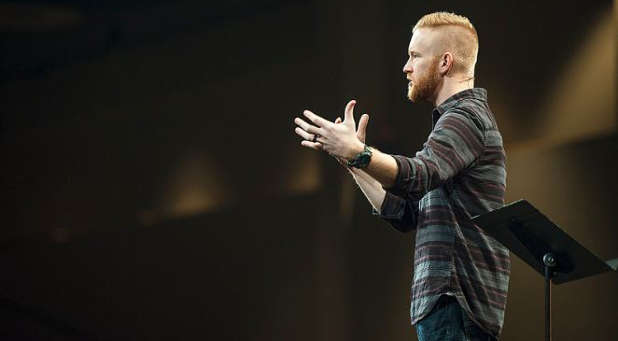
The two basic tasks you face for planning your sermon presentation are the selection and arrangement of your material. If you edit your available material well but do not plan the sequence of segments, you may still have a muddled presentation.
On the other hand, good arrangement of material may have little effect if you do not carefully select what you want to say and what you must leave out.
If you have done all the work called for in this expository preaching method, you will have much more material than you can use in your sermon. Some of your notes will be informative for you but not helpful for the audience. Word studies and historical/cultural background material may help, but much of it may be too complicated. You do not want the sermon to turn into a lecture on the history and language of your text.
As you have explored natural analogies, you have come up with much more illustrative material than you need. Instead of trying to use it all, you must carefully choose only the analogies and examples that will work for the sermon. You may also have in your notes material for argumentation and application that is more than you need.
How do you decide which material to use in the sermon and which to leave in your study notes? Here are five guidelines for making those editorial choices:
1. Select from your notes the material that best presents the message of the text. As you work on your sermon, you will think of various ways to talk about your subject. It is not uncommon for preachers to take their subject well beyond the text, even to the point of straying from it. One principle for selection is to stay close to the text. Choose the material that best exposes the text meaning.
2. Select the material that best appeals to the particular audience. In choosing what is to go in the sermon, you will keep your audience in mind. Their mix of backgrounds, ages, interests, experience and needs call for careful selection of what goes into your sermon. Pastors come to know their people well and can adapt to their needs week by week. Itinerate preachers may want to ask about the audience so they can prepare appropriately.
3. Select material for your sermon that suits the occasion. Sometimes a sermon is being planned for a special situation and calls for particular choices of material. Different services during a normal week may call for a different mix of material for a pastor's sermon. Some sermons may contain more exegetical material. Others may be overbalanced toward illustration and application, depending on the occasion.
4. Select sermon material appropriate for the time available. A common mistake in planning sermon design is including too much material. I have talked with many student preachers who try to squeeze an hour's worth of preaching into 30 minutes. There will be occasions when the preacher will have to adjust to a shorter time than he had planned. If we plan well and preach a sermon without notes or manuscript, we can adjust to the shorter time and still present the sermon well.
5. Select the material for your sermon that will best serve the purpose of the sermon. We have just emphasized that the overarching purpose of every sermon should be to call for faith on the part of the hearer. Write out a purpose statement for the sermon. That statement describes what you hope to see accomplished in the thinking, attitudes, and behavior of the hearer. Once this sermon purpose is clear, it can help guide in the selection of sermon material. ![]()
Adapted from 12 Essential Skills for Great Preaching (B&H Publishing Group, 2006).
For the original article, visit lifeway.com.
Get Spirit-filled content delivered right to your inbox! Click here to subscribe to our newsletter.
Dr. Steve Greene is now sharing stories, teachings, and conversations with guests who lead with love on Love Leads, a new podcast. Listen now.
Dr. Mark Rutland's
National Institute of Christian Leadership (NICL)
The NICL is one of the top leadership training programs in the U.S. taught by Dr. Mark Rutland. If you're the type of leader that likes to have total control over every aspect of your ministry and your future success, the NICL is right for you!
FREE NICL MINI-COURSE - Enroll for 3-hours of training from Dr. Rutland's full leadership course. Experience the NICL and decide if this training is right for you and your team.
Do you feel stuck? Do you feel like you’re not growing? Do you need help from an expert in leadership? There is no other leadership training like the NICL. Gain the leadership skills and confidence you need to lead your church, business or ministry. Get ready to accomplish all of your God-given dreams. CLICK HERE for NICL training dates and details.The NICL Online is an option for any leader with time or schedule constraints. It's also for leaders who want to expedite their training to receive advanced standing for Master Level credit hours. Work through Dr. Rutland's full training from the comfort of your home or ministry at your pace. Learn more about NICL Online. Learn more about NICL Online.


